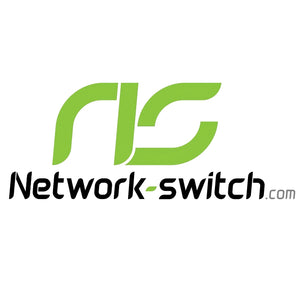Table of content
Data is all around us in today's digital world, from downloading music or photos to purchasing hard drives; understanding digital storage units like KB, MB, GB, and TB is vital to managing your digital life successfully. These terms might initially seem complex but once understood will make life much simpler.
This article will outline what each term entails and provide a conversion table to simplify its usage.
What Are KB, MB, GB and TB?
When measuring digital data, everything is measured in units known as bytes - these represent the basic unit of digital storage space. Larger quantities like KB, MB, GB and TB serve to more easily measure larger amounts of information.

Here is what each abbreviation stands for:
KB (Kilobyte): One Kilobyte equals approximately 1,024 bytes and should only be used when saving small files such as text documents or emails with limited content.
Megabyte (MB): One megabyte equals approximately 1,024 KB and is used to describe medium-sized files such as digital photos, music files or short videos.
GB (Gigabyte): One gigabyte equals about 1,024 megabytes. Gigabytes are often used when dealing with large files like software, HD movies or extensive photo collections.
One TB (Terabyte) equals approximately 1,024GB and is often used when discussing very large data storage devices, like computer hard drives or extensive cloud accounts.
What Are the Differences Among MB, GB, KB, and TB?

The primary distinction among KB, MB, GB, and TB units is their storage capacity - each larger unit can store 1,024 times more data than its smaller predecessor. Let's break this down further:
Kilobytes (KB) are one of the smallest practical units. Consider them when dealing with very small files - for instance a short plain-text email or document is typically measured in Kilobytes.
Megabytes (MB) represent larger file sizes. Most photos taken by smartphones or music files (MP3) usually range between three and five megabytes each.
Gigabytes (GB) are much larger units of measure; HD movies or large software programs often range between 1 GB to 10 GB in size. Many smartphones and laptops specify their storage capacities in gigabytes (GB).
Terabytes (TBs) are massive storage units used by data servers, backup drives, or computing environments with heavy storage needs. A typical modern external hard drive often starts around 1 TB in capacity - enough space for thousands of photos and numerous videos!
Understanding how these units convert is of vital importance
here's an easy reference conversion table:
| Unit | Equal to | Approximate size in bytes |
| 1 KB | 1,024 Bytes | 1 Thousand bytes |
| 1 MB | 1,024 KB | 1 Million bytes (approx.) |
| 1 GB | 1,024 MB | 1 Billion bytes (approx.) |
| 1 TB | 1,024 GB | 1 Trillion bytes (approx.) |
Practical Examples:
- 1 page text document ≈ 30 KB
- High-quality MP3 song ≈ 5 MB
- Full HD movie ≈ 4 GB
- Typical laptop storage ≈ 256 GB - 1 TB
Frequently Asked Questions (FAQs)
Q1: Why do conversions use 1,024 instead of 1,000?
Answer: Since digital storage works on the binary system (base 2), its equivalent of 1,000 is actually 1,024 (210) instead. Therefore computers and digital storage systems use units of 1,024 as opposed to decimal-based 1,000 for conversions.
Q2: Which unit is larger, Megabyte (MB) or Gigabyte (GB)?
Answer: GB (Gigabyte) is much bigger. One gigabyte equals 1,024 megabytes (MB).
Q3: What can a 1TB storage device store?
Answer: Typically a 1TB hard drive can hold approximately: 250,000 photos taken with a 12MP camera or 500 hours of HD video playback or 6.5 million pages of documents.
Q4: What are the differences between bits and bytes?
Answer: A bit is defined as any digital unit (0 or 1) while bytes consist of 8 bits. Typically, bits measure data transfer rates (internet speeds), while bytes measure storage capacities.
Q5: Are There Units Larger Than 1 Terabyte (TB)?
Answer: Absolutely! After 1 TB, storage units continue to grow exponentially:
- Petabytes (PBs): 1,024 TB
- Exabytes (EBs): 1,024 PB
- Zettabyte (ZB): 1,024 EB
- Yottabytes (YBs): 1,024 ZB
typically used by large enterprises and data centers handling massive volumes of information.
Did this article help you or not? Tell us on Facebook and LinkedIn . We’d love to hear from you!






 https://network-switch.com/pages/about-us
https://network-switch.com/pages/about-us

























